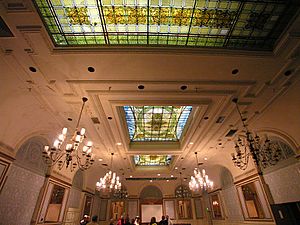Palm Court (Alexandria Hotel) facts for kids
The Palm Court is a beautiful ballroom inside the Hotel Alexandria in downtown Los Angeles, California. It was also known by other names like the Franco-Italian Dining Room or the Grand Ballroom. From 1911 to 1922, it was a very important place. U.S. Presidents William Howard Taft and Woodrow Wilson gave speeches there. Famous general John J. Pershing also visited.
This room is where Paul Whiteman, who later became known as the "Jazz King," started his band in 1919. The famous actor Rudolph Valentino danced with movie stars in the Palm Court. It was also where Hollywood held its biggest parties when movies were just starting. Many people loved its history and its amazing stained-glass Tiffany skylight. A well-known Los Angeles writer, Jack Smith, even called it "surely the most beautiful room in Los Angeles." Because of its importance, the Palm Court was named a City of Los Angeles Historic-Cultural Monument in 1971.
Contents
A Look Back: The Palm Court's Golden Years (1911-1922)
The Hotel Alexandria was built in 1906. It was designed by a famous Los Angeles architect named John Parkinson. In 1911, the hotel decided to make a big addition to double its size. The Palm Court was part of this new addition.
When the plans for the new "crystal palmroom" were announced, the Los Angeles Times newspaper wrote about it. They said the room would be one of the biggest in California. It would be perfect for all kinds of social events, like afternoon teas and parties.

The new ballroom opened in October 1911 with a grand party. About 385 of the city's most important people attended. The Alexandria orchestra played music all evening. The Los Angeles Times described the room as a "sunburst of light." It had many crystal chandeliers and smaller lights. The newspaper said guests were "spellbound" by its beauty when they first entered.
For the next 12 years, the Palm Court was the most popular place for big events in Los Angeles. It hosted parties for Presidents like Woodrow Wilson and military leaders like Gen. John J. Pershing. Silent film stars and early movie producers also gathered there for fancy balls.
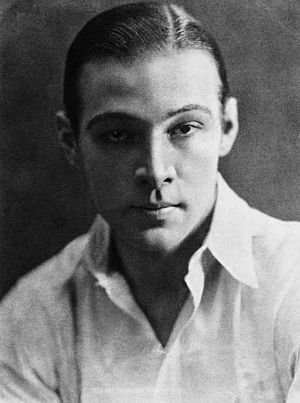
The famous actor Rudolph Valentino often came to the dances at the Alexandria's ballroom. Actress Claire Windsor remembered dancing there with Valentino when they were both just starting out. Another actress, Marjorie Bennett, also recalled meeting Valentino at a tea dance.
During this time, many movie stars and celebrities visited the Alexandria. These included Mary Miles Minter, Sarah Bernhardt, Enrico Caruso, and Jack Dempsey. Charlie Chaplin reportedly had a suite at the hotel. Western star Tom Mix even rode his horse through the lobby!
The large rug in the lobby was called the "million-dollar carpet." This was because so much business was supposedly done there every day. In 1919, D.W. Griffith, Mary Pickford, and Douglas Fairbanks met there to create United Artists, a famous movie studio.
Memorable Moments at the Palm Court
From 1911 to 1923, the Palm Court hosted many important gatherings in Los Angeles. Here are some of the most notable events:
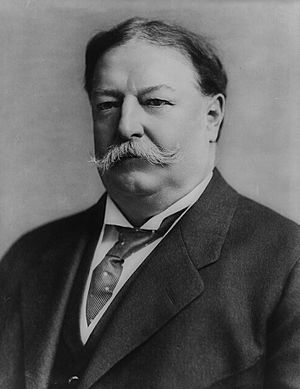
- 1911: U.S. President William Howard Taft gave a speech about international peace at a banquet. He talked about creating a court of nations to solve problems between countries. The Los Angeles Times called his speech "masterful."
- 1912: City leaders gathered for a big dinner to celebrate the 75th birthday of Gen. Harrison Gray Otis, who was the editor of the Los Angeles Times.
- 1913: A Mardi Gras costume ball was held. The ballroom was decorated with funny faces and hundreds of small yellow lights. People danced the Tango, a new dance from Argentina.
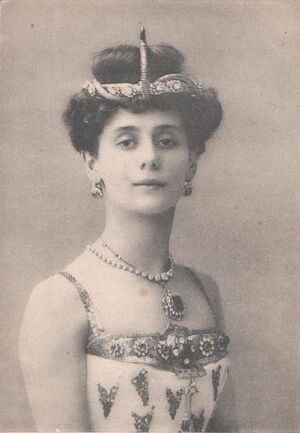
- 1915:
- A.C. Bilicke, the millionaire who built the Alexandria Hotel, sadly died when his ship, the Lusitania, was sunk by a German torpedo.
- The Photoplayers Ball was a big event for movie actors. Many famous people like Mary Pickford, Dorothy Gish, and Samuel Goldfish (later Samuel Goldwyn) attended.
- Famous dancer Anna Pavlova was honored at a dinner. She performed her celebrated "Glow Worm Dance."
- 1916:
- There were plans to build the first indoor ice skating rink on the Pacific Coast inside the ballroom!
- A group called the California Prosperity League met to discuss keeping California's wine industry strong.
- The Cherry Blossom Players from Japan performed traditional Japanese dances and plays.
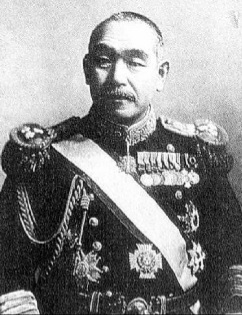
- 1918:
- The hotel's lower floors and ballroom were used for Women's Liberty Loan Day. Thousands of women gathered to support the war effort. Actress Marie Dressler spoke about Liberty Bonds.
- Japanese Vice-Admiral Kantarō Suzuki was honored at a dinner. He spoke about the friendship between Japan and the United States. Suzuki later became Japan's Prime Minister at the end of World War II.
- A gala was held to help sailors. Charlie Chaplin, Lillian Gish, and Mary Miles Minter were among the entertainers.
- Douglas Fairbanks led a pep rally for Liberty Bond salespeople. He even rode an elephant to the rally!
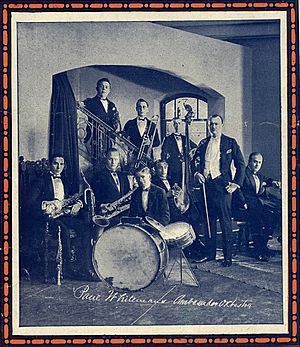
- 1919:
- U.S. President Woodrow Wilson spoke to a crowd of 515 people. The ballroom was decorated with grapevines, flowers, and a fountain. Wilson spoke about the League of Nations.
- Hollywood's Thanksgiving ball was a huge event. Many stars attended, including Bebe Daniels and Mary Miles Minter.
- Paul Whiteman, who would become known as the Jazz King, started his first band at the Alexandria. He played dance and dinner music for Hollywood's elite for six months.
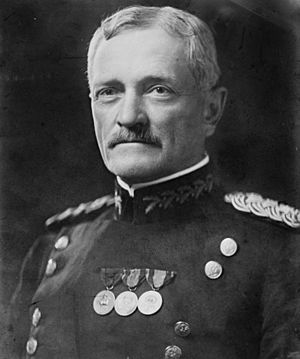
- 1920:
- A crowd of 500 welcomed Gen. John J. Pershing, a leader from World War I. He spoke about Americanism.
- At a Chamber of Commerce dinner, speakers predicted that Los Angeles would become a very important city.
- The ballroom was decorated like a cafe in Paris for a "Christmas in Paris" ball. Movie actresses like Colleen Moore were models in a fashion show.
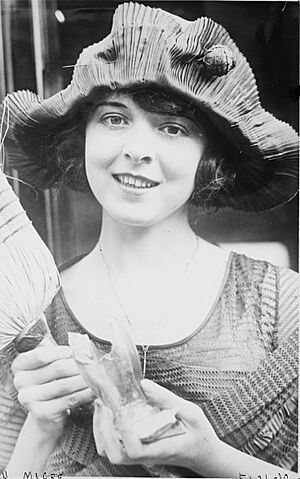
- 1921:
- Film producer J.H. Goldberg showed his new movie, The Miracles of the Jungle. The ballroom was turned into a jungle scene with palms and vines to create the right atmosphere!
- Italian General Pietro Badoglio was honored as a "World War Hero" at a banquet.
- 1922: The ballroom became "Bugland" for the annual "Artists' Ball." The walls were covered with colorful tapestries showing beetles and dragons.
The Palm Court's Later Years
After 1923, a new fancy hotel called the Biltmore opened. This made the Alexandria less popular. By 1932, the Alexandria Hotel Company went bankrupt. In 1934, the hotel closed, and many of its beautiful items were sold. It reopened in 1937 but became less grand over time.
During the 1950s and 1960s, the Grand Ballroom (Palm Court) was used as a training ring for boxers. In 1958, boxer Pajarito Moreno trained there before a big fight. People would pay to watch boxers like Jose Becerra and Battling Torres train. It was a big change from the elegant parties of the past! One writer noted that President Wilson once spoke in the same room.
Bringing Back the Beauty: Restoration and Recognition
In the 1980s, the Palm Court was restored to its former glory. Columnist Jack Smith again called it "the most beautiful room in Los Angeles." In 2005, the Los Angeles Times described it as an "architectural gem" with its amazing stained-glass Tiffany skylight.
The Palm Court was officially named a Historic Cultural Monument in 1971. By 2008, the Alexandria Hotel had been changed into apartments.
Ballet at the Alexandria
In 2009, the Blankenship Ballet Company moved into the Alexandria Hotel. They wanted to bring new life to the Palm Court. In May 2010, they performed a special ballet called "Cuban Ballet & Dance Extravaganza" in the Palm Court. This show was even filmed and shown around the world on Supreme Master Television.


